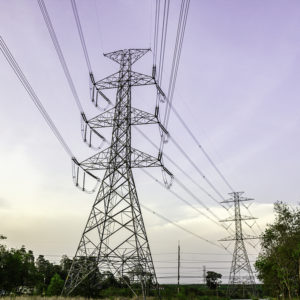The nation is watching Texas with great concern. Some four million Texas households went without electricity in sub-zero temperatures on Tuesday. Ordinarily, such winter power outages come when snowstorms knock down trees and power lines. In this case, however, the problems actually stem from an overwhelmed electricity grid that hasn’t been able to keep up with demand.
The story is still coming into focus, but there were warnings and concerns the Texas grid might not hold up when it was needed most. Over the past few years, Texas has seen sweeping changes in its power mix. Spurred by state and federal subsidies, the Texas grid has seen much of its baseload coal-fired capacity retired to be replaced by huge additions of wind power. This shift, part of a trend picking up steam across the country, is increasingly exposing consumers to electricity price spikes and rising concern about grid reliability challenges.
In perfect conditions, Texas’ wind power can meet more than half of the state’s electricity needs. But on other days – like during this crisis – it all but disappears.
The state’s natural gas power plants, coal plants, and nuclear power plants have been left to pick up the slack. But with natural gas used for both home heating and electricity generation, a considerable amount of the gas fleet proved unavailable as well. When Texans needed reliable power most, the grid found itself woefully short and rolling blackouts ensued.
The rapid shift away from baseload power and balanced electricity mixes on grids across the country is already proving a nightmare for consumers. During a heatwave this summer, Californians saw electricity demand exceed supply as well. California’s growing reliance on solar power meant much of the state’s generating capacity wasn’t available at night when temperatures stayed in the triple digits and air conditioning units were still running at full blast. California’s grid operator had to institute rolling blackouts to keep the entire western electricity grid from collapsing.
The energy transition to ever greater reliance on weather-dependent renewable power requires responsible management and planning. As Texans and Californians can now testify, we aren’t getting it.
As a California assemblyman said this past summer following the state’s blackouts, “today we have a grid that is increasingly expensive, unreliable and unavailable when the people of California need it the most.” Don’t be surprised to hear much of the same sentiment from Texans in the weeks ahead. In fact, Gov. Greg Abbott of Texas has already called for emergency reform of the body that oversees the state’s power grid and electricity market.
The reliability challenges that have stunned California and Texas appear to be a feature of grids with growing reliance on renewable energy. In the U.K., this winter, the nation’s grid operator has already issued four alerts for electricity demand exceeding supply. In Germany, which has moved particularly aggressively to wind and solar power, overcast, windless days have become such a problem the Germans have invented a word for them which translates to the “dark doldrums.”
A reckoning is on the horizon. Despite the flashing warnings to proceed with caution, President Biden wants to eliminate all existing coal and natural gas generating capacity on the electricity grid by 2035. These two energy sources meet more than 60 percent of the nation’s electricity needs and the lion’s share when the going gets tough.
Tackling emissions reduction is a laudable goal but Americans are seeing in real-time what happens when we stop putting reliable power first. Will Texas be the wake-up call we need? We’re about to find out.

